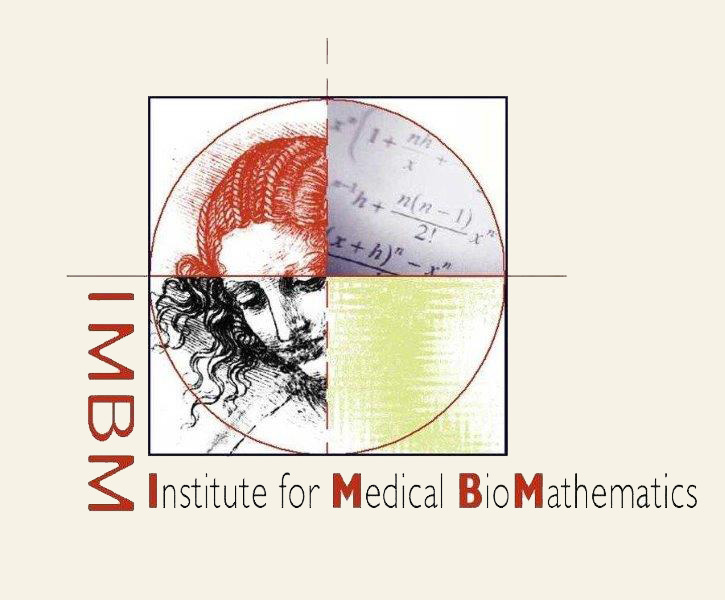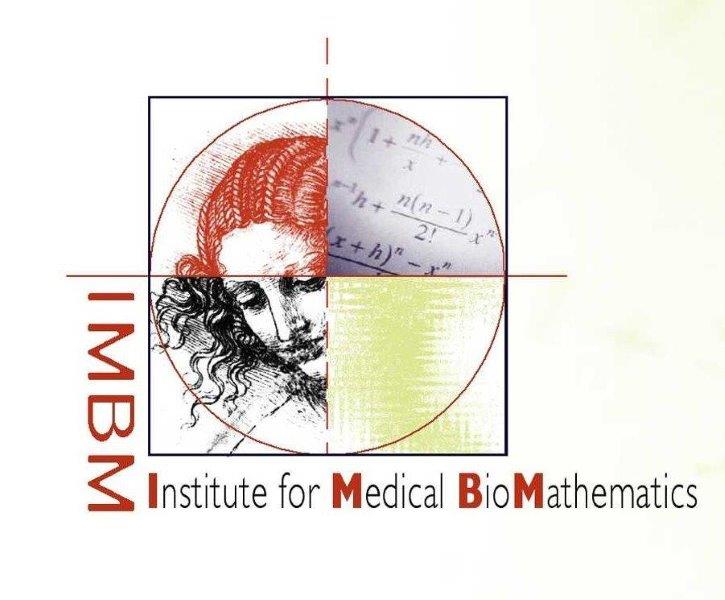
Yuri Kogan
Yuri Kogan holds a BA degree in Theoretical Mathematics from the Tel-Aviv University (TAU). Over many years of scientific research at IMBM, he has been involved in biomathematical modelling of several cancer indications, as well as in researching cancer stem cells, intracellular signal transduction, immune system functioning and clinical immunotherapy.
Scientific activity in 2022
During the recent year, Yuri lead the development of the novel algorithm for individual prediction of the immediate deterioration for the hospitalized Covid-19 patients, based on their blood test results. For this project, we have established cooperation with Covid-19 divisions in Sheba Hospital and in Barzilai Hospital, and have obtained real-word patient data for the analysis and model development. Our model employs advanced Machine Learning methods and has retrospectively evaluated ROC AUC metric of 0.75-0.8 tested by cross-validation and independent external validation.
Scientific activity in 2023
Yuri will focus on modelling the dynamics of immune system, in response to disease. The model will be applied to study response to viral infection, sepsis, and cancer immunotherapy. We will start by creating a population model of the longitudinal dynamics of immune response to Covid-19 infection.
Publications
-
-
- Kogan Y, Robinson A, Itelman E, Bar-Nur Y, Jakobson DJ, Segal G, et al. Developing and validating a machine learning prognostic model for alerting to imminent deterioration of hospitalized patients with COVID-19. Sci Rep (2022) 12(1):19220
-
Albrecht M, Kogan Y, Kulms D, Sauter T. Mechanistically Coupled PK (MCPK) Model to Describe Enzyme Induction and Occupancy Dependent DDI of Dabrafenib Metabolism. Pharmaceutics 2022, 14, 310. https://doi.org/10.3390/pharmaceutics14020310
-
Agur Z, Elishmereni M, Foryś U, Kogan Y. Accelerating the Development of Personalized Cancer Immunotherapy by Integrating Molecular Patients’ Profiles with Dynamic Mathematical Models. Clinical Pharmacology & Therapeutics 2020. doi: https://doi.org/10.1002/CPT.1942
-
Perlstein D, Shlagman O, Kogan Y, et al. Personal response to immune checkpoint inhibitors of patients with advanced melanoma explained by a computational model of cellular immunity, tumor growth, and drug. Plos One. 2019;14(12):e0226869
-
Tsur N, Kogan Y, Rehm M, Agur Z. Response of Patients with Melanoma to Immune Checkpoint Blockade – Insights Gleaned from Analysis of a New Mathematical Mechanistic Model.Journal of Theoretical Biology 2019:110033. doi: 10.1016/j.jtbi.2019.110033. PubMed PMID: 31580835.
-
Tsur N, Kogan Y, Avizov-Khodak E, Vaeth D, Vogler N, Utikal J, Lotem M, Agur Z. Predicting response to pembrolizumab in metastatic melanoma by a new personalization algorithm.Journal of Translational Medicine 2019;17(1):338. doi: 10.1186/s12967-019-2081-2. PubMed PMID: 31590677.
-
Hochman G, Halevi-Tobias K, Kogan Y, Agur Z. Extracellular inhibitors can attenuate tumorigenic Wnt pathway activity in adenomatous polyposis coli mutants: Predictions of a validated mathematical model. PLoS One 2017 Jul 14;12(7):e0179888.
-
Agur Z, Halevi-Tobias K, Kogan Y, et al. Employing Dynamical Computational Models for Personalizing Cancer Immunotherapy. J Expert Opinion on Biological Therapy , 2016.
-
Forys U, Bodnar M, Kogan Y.Asymptotic dynamics of some t-periodic one-dimensional model with application to prostate cancer immunotherapy. J Math Biol 2016.
-
Kogan Y, Agur Z, Elishmereni M. A mathematical model for the immunotherapeutic control of the Th1/Th2 imbalance in melanoma. Discrete and Continuous Dynamics – Series B 2013, 18(4) pp. 1017-1030.
-
Kogan Y, Halevi-Tobias K, Elishmereni M, Vuk-Pavlović S, Agur Z. 2012. Reconsidering the Paradigm of Cancer Immunotherapy by Computationally Aided Real-Time Personalization. Cancer Research, Published OnlineFirst March 15, 2012; doi: 10.1158/0008-5472.
- Kogan Y, Halevi-Tobias KE, Hochman G, Baczmanska AK, Leyns L, Agur, Z. A new validated mathematical model of the Wnt signaling pathway predicts effective combinational therapy by sFRP and Dkk Biochem J 2012, 443, doi:10.1042/BJ20111887.
- Vainstein V, Kirnasovsky O, Kogan Y, Agur Z, Strategies for cancer stem cell elimination: Insights from mathematical modeling. J Theor Bol 2012, vol. 298, pp. 32–41.
- Kronik N, Kogan Y, Schlegel PG, Wölfl M. Improving T-cell Immunotherapy for Melanoma Through a Mathematically Motivated Strategy: Efficacy in Numbers? J of Immunotherapy 2012 35(2).
- Agur Z, Bloch N, Gorelik B, Kleiman M, Kogan Y, Sagi Y, Sidreansky D, Ronen Y. Developing Oncology Drugs Using Virtual Patients of Vascular Tumor Diseases. In Systems Biology in Drug Discovery and Development, Young DL, Michelson S. (eds). Wiley, 2011, pp 203-231.
- Agur Z, Kirnasovsky OU, Vasserman G, Tencer-Hershkowicz L, Kogan Y, Harrison H, et al. Dickkopf1 regulates fate decision and drives breast cancer stem cells to differentiation: an experimentally supported mathematical model. PLoS One 2011 6(9) e24225.
- Kronik N., Kogan Y., Elishmereni M., Halevi-Tobias K., Vuk Pavlović S., Agur Z. Predicting Effect of Prostate Cancer Immunotherapy by Personalized Mathematical Models PLoS One 2010 5(12) e15482.
- Agur Z., Kogan Y., Levi L., Harrison H., Lamb R., Kirnasovsky O.U., Clarke R.B. Disruption of a Quorum Sensing Mechanism Triggers Tumorigenesis: a Simple Discrete Model Corroborated by Experiments in Mammary Cancer Stem Cells. Biol Direct 2010 5(1) pp.20-41.
- Kogan Y., Forys U., Shukron O., Kronik N., Agur Z. Cellular immunotherapy for high grade Gliomas: mathematical analysis deriving efficacious infusion rates based on patient requirements. SIAM J. Appl. Math. 2010 70(6) pp. 1953-1976.
- Agur Z, Elishmereni M, Kogan Y, Kheiffetz Y, Ziv I, Shoham M, Vainstein V. Mathematical modeling as a new approach for improving the efficacy/toxicity profile of drugs: the thrombocytopenia case study, Preclinical Development Handbook, Shayne Gad Ed., John Wiley and Sons, USA. 2008, pp 1229-1266.
- Kirnasovsky O, Kogan Y, Agur Z. Analysis of a Mathematical Model for the Molecular Mechanism of Fate Decision in Mammary Stem Cells, Mathematical Modelling of Natural Phenomena. 2008 3(7) pp. 78-89.
- Kirnasovsky OU, Kogan Y, Agur Z. Resilience in stem cell renewal: development of the Agur–Daniel–Ginosar model. Discrete and Continuous Dynamical Systems – Series B (DCDS-B), Volume: 10, Number: 1, July 2008
- Kronik N, Kogan Y, Vainstein V, Agur Z, Improving alloreactive CTL immunotherapy for malignant gliomas by a computerized model. Cancer Immunology, Immunotherapy, Vol. 57, pp.424-439, 2008.
- Agur Z, Elishmereni M, Kogan Y, Kheifetz Y, Ziv I, Shoham M, Vainstein V, Mathematical modeling as a new approach for improving the efficacy/toxicity profile of drugs: the thrombocytopenia case study. In: Preclinical Development Handbook, John Wiley and Sons. 2008.
- Kogan Y, Ribba B, Marron K, Dahan N, Vainshtein V, Agur Z. 2004. Intensified Doxorubicin-Based Regimen Efficacy in Residual Non-Hodgkin’s Limphoma Disease: Towards a Computationally Supported Treatment Improvement. Mathematical Modelling of Natural PhenomenaVol. 2, No. 3, 2007, pp. 47-68.
- Vainstein V., Ginosar Y., Shoham M., Ianovski A., Rabinovich A., Kogan Y., Selitser V., Agur Z. Improving cancer therapy by Doxorubicin and Granulocyte colony-stimulating factor: Insights from a Computerized Model of Human Granulopoiesis. Mathematical Modelling of Natural Phenomena 2006 1(2), pp.70-80.
- Kheifetz Y, Kogan Y, Agur Z, Long-range predictability in models of cell populations subjected to phase-specific drugs: growth-rate approximation using properties of positive compact operators, M3AS, 16(7) Supp, July 2006-11-15
- Forys U, Kheiffez Y, Kogan Y, Critical point analysis for three-dimensional cancer angiogenesis models, Mathematical Biosciences and Engineering, vol.2 num.3, August 2005.
- Kheiffez Y, Kogan Y, Agur Z., 2004. Matrix and compact operator description of resonance and anti-resonance in cell populations subjected to phase-specific drugs. Journal of medical informatics and technologies. Vol. 8, 2004, MM11-MM29
- Arakelyan L, Merbl Y, Daugulis P, Ginosar Y, Vainstain V, Kogan Y, Selitser V, Harpak H and Agur Z. 2002. Using multi-scale mathematical modeling in anti-angiogenic therapy, Chap. 7 in Cancer Modeling and Simulation Mathematical Biology and Medicine Series, Chapman & Hall/CRC
-

